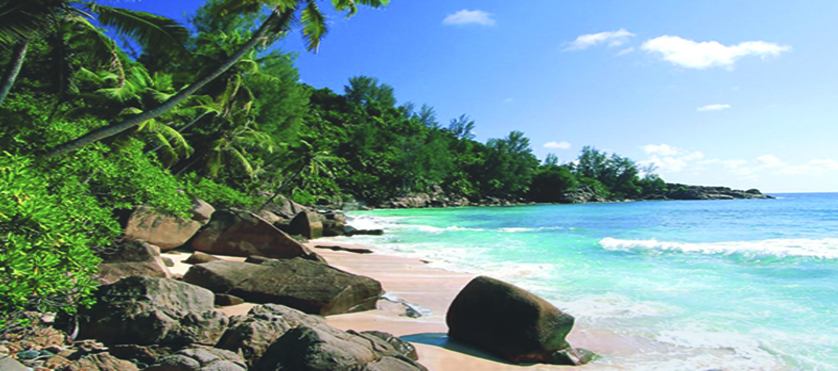
Nha Trang, which now
has a population of 280,000 was constructed as a seaport in the 1920s. It is the
capital of Khanh Hoa province. Fishing is the major industry. It is one of the
most beautiful cities in southern Vietnam. It has with lovely
beaches, 19 beautiful surrounding islands and is renown for its great ice
cream! As the influx of tourists from Vietnam and abroad is ever
increasing, a diversity of hotels and guests houses have been built along the
beautiful beachfront. Intermingled with these new hotels are some very quaint
and sometimes majestic old French villas.
It's pleasant to cycle
in Nha Trang and the surrounding areas. The city has wide boulevards and very
little traffic. On days where it is too warm to cycle, take advantage of your
surroundings and take a boat ride out to the islands for a day of snorkeling in
turquoise water and coral reefs. It will be a day that you will treasure
forever. You can also have a fantastic seafood banquet for lunch while on these
islands, and later return to town just in time to walk on the beach for a late
afternoon beer or fruit shake. There are a number of wonderful sites in the
surrounding area which you should visit and which we recommend:
Po Nagar
Cham Tower
Situated on the north
side of Nha Trang, you will need to cross the Xom
Bong Bridge
where you will see red and blue fishing boats and the best-preserved Cham Towers
in Vietnam,
a sanctuary to Po Nagar, a mythical goddess. Among the 8 towers constructed
between the 7th and 12th centuries, only 4 are remain. They are still used as
places of worship. There is a congregation of nuns who live there who will
guide you around the site with their best sign language and smiles. There is a
small but interesting museum to the right of the North Tower
with photographs and ancient statues. The hill upon which the Cham Towers
sit offers a great panoramic view of the surrounding beauty as well as a view
of the entrance of the river with Nha Trang.
The entrance to the
site is from street level. Then you will need to follow a staircase to the top.
As you escalate the staircase, you will be able to see the remains of the
mediation hall which was the original entrance ro the site for Cham worshipers.
It will be to your right. The North
Tower is the largest and
the main one. It is situated on a higher level directly in front of the
meditation hall. The other smaller towers are only meters away from the North Tower.
You will note that all of them are facing due East. Please remember to take off
your shoes before entering any of the temples.
Hon Chong Headland
Due east of the Cham Towers
are a series of fishing villages. You will observe that there are many boats
that continually come in or go out from the local harbours over a
surreal-looking bay next to the Xom
Bong Bridge.
There is a local fish market that opens early in the morning. West of the Cham Towers
is the Hai Dao Island
resort. It is composed of a series of cabins connected to the mainland by
footbridges. Cockfights are sometimes staged here. To the northeast of the
towers is Hon Chong Promontory where hundreds of boulders are balanced on top
of one another. The massive boulder at the tip of the Promontory is call Chong
Rock. Various legends are associated with this boulder which is said to bear
the imprint of a large hand. Naturally, there are a number of beautiful
look-outs with refreshment stands available.
Pagodas and churches
On the northwest side
of Nha Trang is Long Son Pagoda. It is an active Buddhist temple featuring an
unusual red brass Buddha sitting on a wooden lotus pedestal. On top of a hill
behind the pagoda is a massive 9-m high white Buddha on a lotus throne.
Embedded in the octagonal base of the Bhudda are 7 stucco likenesses of
Buddhist martyrs, monks and nuns who died protesting the repressive Ngo Dinh
Diem regime in southern Vietnam
during the Vietnam War. Some of them immolated themselves and the white Buddha
was built to their memory in 1963.
On the other side of
the tracks, east of the railway station is Nha Trang Cathedral complete with
its stained glass windows and French Gothic lines. It was built in the 1930s
and the daily masses are still held here in the early morning and late
afternoon.
Pasteur Institute
At the north end of Tran Phu Blvd. is
the Pasteur Institute, with a small but fascinating Museum dedicated to the
French Dr. Alexander Yersin (1863-1943). The Pasteur Institute was founded by
Yersin in 1895, and he is probably one of the most respected historical
Frenchmen in Vietnam.
Being a Renaissance man, Yersin was not only famous for pioneering medical
research but was an explorer, botanist, biologist and an entomologist He was also
interested in photography and astronomy. He explored the Da Lat area and
recommended building a hill station there. He was also responsible for the
introduction of rubber and quinine producing trees and discovered the microbe
that caused the bubonic plague. This institute now performs research and
produces vaccines. Should you have an occasion to visit this Institute, you
will be pleased to see that the office and library of Dr. Yersin are now open
to the public and contain a small yet interesting collection of his equipment.
It was on Yersin's recommendations that his laboratory in Nha Trang and Dr.
Albert Calmette's laboratory in Saigon were
upgraded to the level of Indochina Pasteur Institute. It was the first
established outside Paris.
Indochinese Pasteur Institutes later appeared in Hanoi
and Da Lat, and microbiology labs opened in Hue,
Vientiane and
Phnompenh.